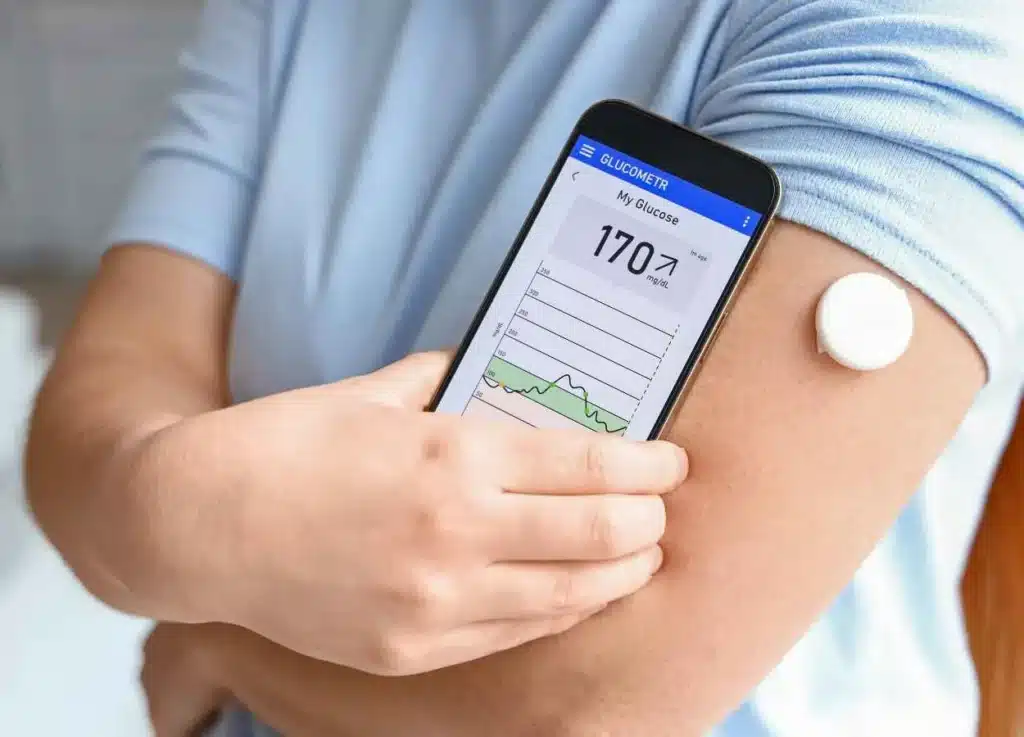In recent years, managing diabetes has seen remarkable advancements, and one of the most significant breakthroughs is the introduction of over-the-counter continuous glucose monitors (CGMs). These devices have revolutionized the way individuals monitor their blood sugar levels, offering convenience, accuracy, and real-time insights into glucose fluctuations. Today, we delve into the world of CGMs, particularly focusing on the first over-the-counter option and whether it’s the right choice for you.
Understanding Counter Continuous Glucose Monitor
A Counter Continuous Glucose Monitor (CGM) is a small wearable device that continuously tracks glucose levels in the interstitial fluid beneath the skin. Unlike traditional fingerstick tests, which provide only point-in-time readings, CGMs offer continuous monitoring, giving users a comprehensive view of their glucose trends throughout the day and night. This real-time data empowers individuals with diabetes to make informed decisions about their diet, exercise, and medication, leading to better glycemic control and improved overall health.
The Advantages of Counter Continuous Glucose Monitor
Convenience
With a CGM, there’s no need for frequent finger pricks, as the device automatically measures glucose levels every few minutes. This eliminates the hassle and discomfort associated with traditional glucose monitoring methods, allowing users to seamlessly integrate monitoring into their daily routines.
Accuracy
CGMs provide highly accurate readings, reducing the likelihood of errors that can occur with manual testing. By continuously monitoring glucose levels, CGMs offer a more comprehensive picture of glycemic fluctuations, enabling users to detect trends and patterns that may go unnoticed with intermittent testing.
Real-Time Insights
One of the most significant benefits of CGMs is the ability to access real-time glucose data at any time. This instant feedback allows users to respond promptly to changes in their glucose levels, whether adjusting insulin dosages, modifying dietary choices, or engaging in physical activity.
Customizable Alerts
CGMs can be programmed to alert users when their glucose levels are too high or too low, helping to prevent hyperglycemia and hypoglycemia-related complications. These customizable alerts provide peace of mind and enable proactive management of blood sugar levels.
Remote Monitoring
Many CGM systems offer the option for remote monitoring, allowing caregivers or healthcare providers to access glucose data remotely. This feature is especially beneficial for individuals who require additional support in managing their diabetes, such as children, elderly patients, or those with complex medical needs.
Read More: How Can I Get a Continuous Glucose Monitor?
Is Counter Continuous Glucose Monitor Right for You?
While CGMs offer numerous advantages, it’s essential to consider whether they align with your individual needs and preferences. Here are some factors to consider when evaluating whether a CGM is right for you:
Lifestyle: Are you willing to wear a continuous glucose monitor consistently? CGMs require wearing a small sensor on your skin, typically on the abdomen or upper arm, and using a transmitter to receive data. Consider whether this level of commitment fits with your lifestyle and daily activities.
Cost: CGMs can be a significant investment, as they often involve upfront costs for the device and ongoing expenses for sensors and transmitters. Additionally, not all insurance plans cover CGMs, so it’s essential to consider the financial implications before making a decision.
Read Guide about Wegovy Dosage Guide: The Best Way For Weight Loss
Comfort: Some individuals may find wearing a CGM sensor uncomfortable or irritating, particularly if they have sensitive skin or allergies to adhesive materials. It’s essential to test a sample sensor before committing to long-term use to ensure comfort and compatibility.
Integration with other devices: If you’re already using other diabetes management devices, such as insulin pumps or smartphone apps, consider whether a CGM integrates seamlessly with your existing tools. Compatibility and ease of use can significantly impact the overall effectiveness of your diabetes management strategy.
Healthcare provider recommendation: Before starting a CGM, consult with your healthcare provider to discuss whether it’s a suitable option for you. Your healthcare team can guide device selection, sensor placement, data interpretation, and integration into your diabetes management plan.
Also, read about Can Diabetes Be Reversed?
In conclusion, Counter Continuous Glucose Monitors represent a significant advancement in diabetes management, offering convenience, accuracy, and real-time insights into glucose levels. While CGMs may not be the right choice for everyone, they can be a valuable tool for individuals looking to gain better control over their diabetes. By weighing the advantages, considerations, and individual preferences, you can determine whether a CGM is the right fit for your unique needs. If you’re ready to take the next step in your diabetes management journey, consider exploring the options available and consulting with your healthcare provider to make an informed decision.


